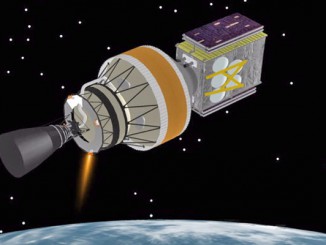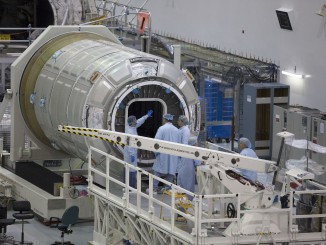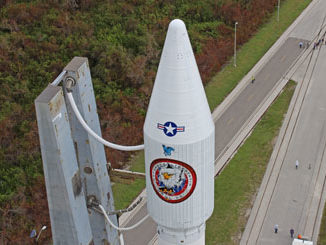This is the launch timeline to be followed by the Atlas 5 rocket’s ascent into orbit from Cape Canaveral with NASA’s Tracking and Data Relay Satellite-M. Launch is scheduled for Friday at 8:03 a.m. EDT (1203 GMT).
T+0:00:01.1 Liftoff
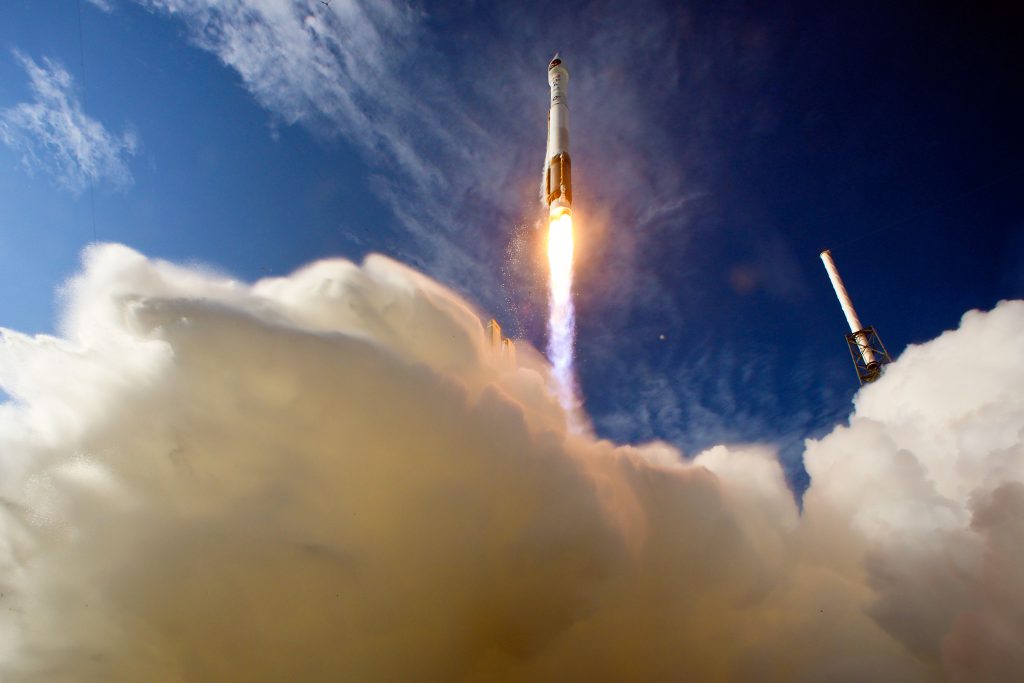
With the RD-180 main engine running, the Atlas 5 vehicle lifts off and begins a vertical rise away from Complex 41 at Cape Canaveral Air Force Station, Florida.
T+0:00:91.8: Max Q
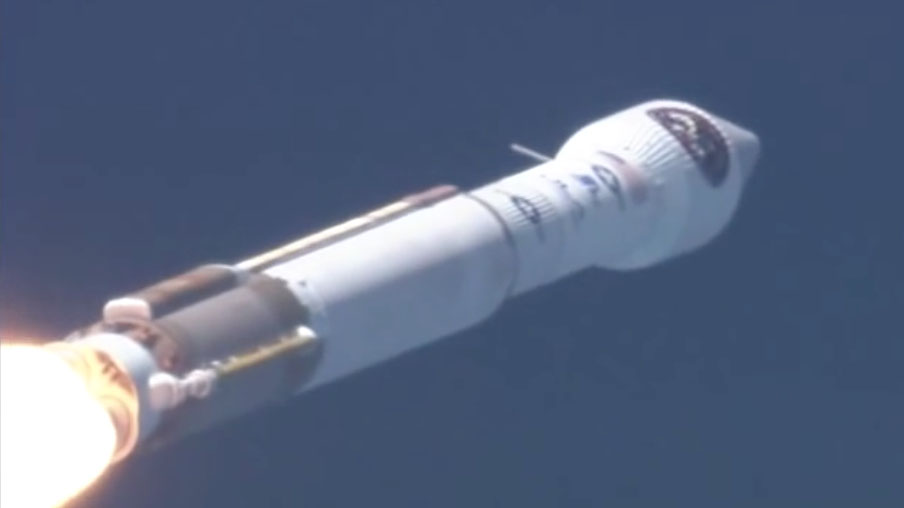
The Atlas rocket, after breaking the sound barrier at 80 seconds, passes through the region of maximum dynamic pressure during ascent through the lower atmosphere.
T+0:04:02.2 Booster Engine Cutoff
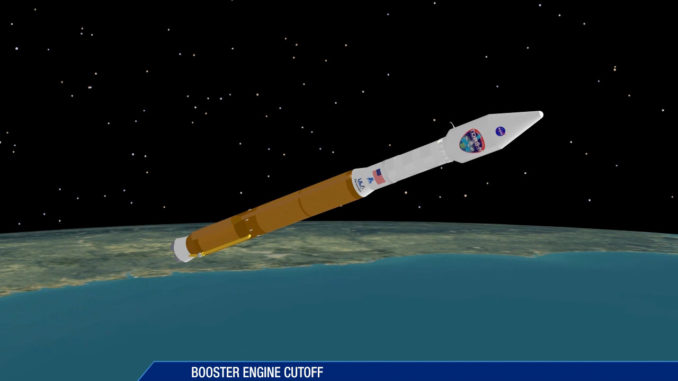
The RD-180 main engine completes its firing after consuming its kerosene and liquid oxygen fuel supply in the Atlas first stage.
T+0:04:08.2 Stage Separation
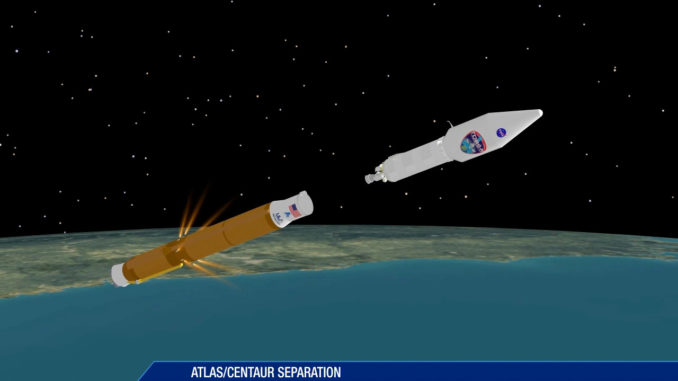
The Common Core Booster first stage of the Atlas 5 rocket separates from the Centaur upper stage. Over the next few seconds, the Centaur engine liquid hydrogen and liquid oxygen systems are readied for ignition.
T+0:04:18.2 Centaur Ignition 1
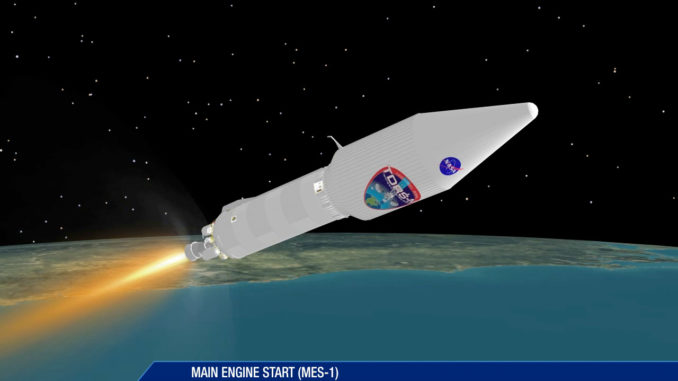
The Centaur RL10C-1 engine ignites for the first of two upper stage firings. This burn will inject the Centaur stage and TDRS-M spacecraft into an initial parking orbit.
T+0:04:26.2 Nose Cone Jettison
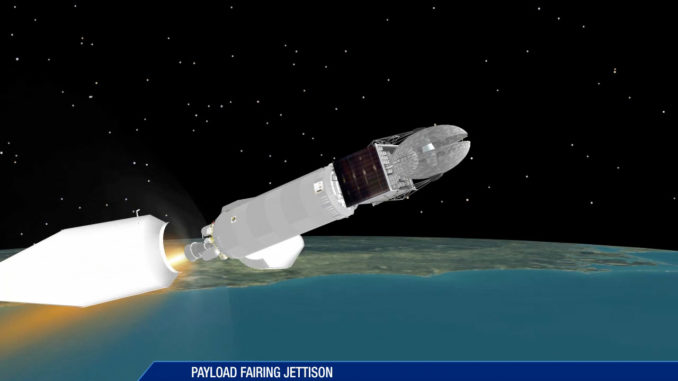
The payload fairing that protected the Tracking and Data Relay Satellite-M spacecraft during launch is separated after passage through the atmosphere.
T+0:17:57.7 Centaur Cutoff 1
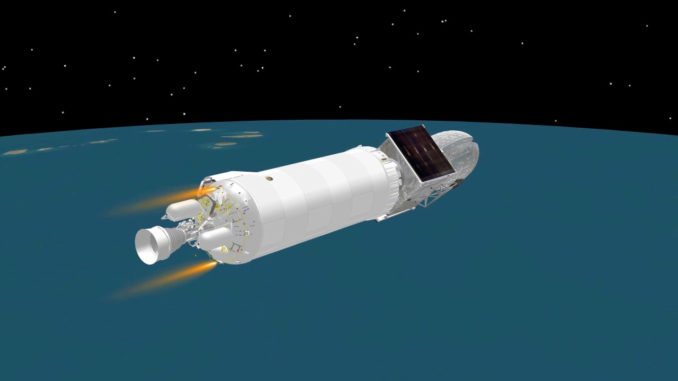
The Centaur engine shuts down after arriving in a planned elliptical parking orbit. The vehicle enters a 90-minute coast period before arriving at the required location in space for the second burn.
T+1:48:03.7 Centaur Ignition 2
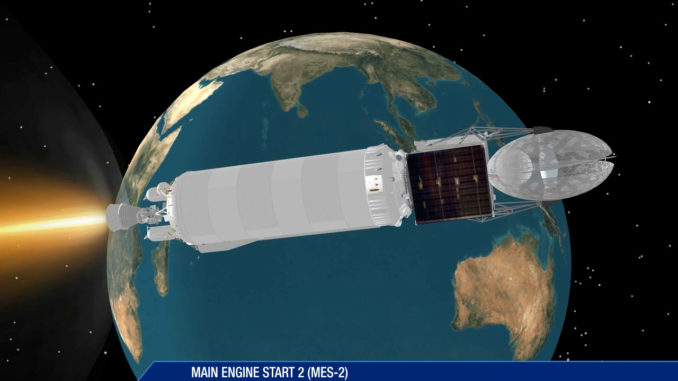
A final push by Centaur is ignited to reach a high-perigee geosynchronous transfer orbit for NASA’s Tracking and Data Relay Satellite-M spacecraft.
T+1:49:00.1 Centaur Cutoff 2
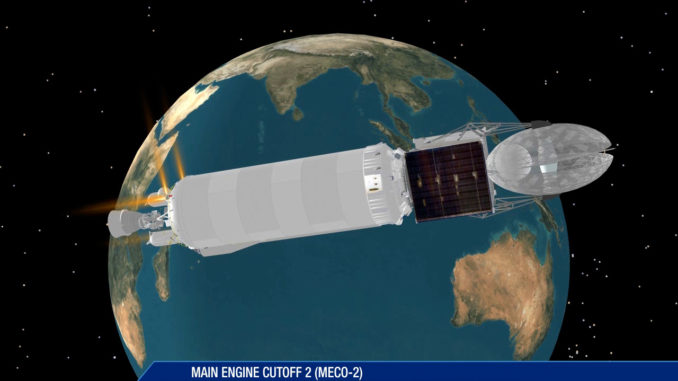
The powered phase of flight is concluded as the Centaur reaches a customized geosynchronous transfer orbit ranging from 2,883 statute miles at its closest approach to Earth to 22,237 statute miles at apogee and an inclination of 26.2 degrees.
T+1:53:46:1 Spacecraft Separation
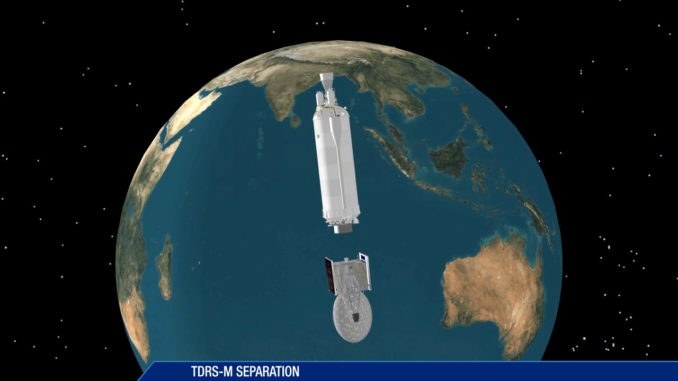
NASA’s Tracking and Data Relay Satellite-M is released into orbit from the Centaur upper stage to complete the launch.

